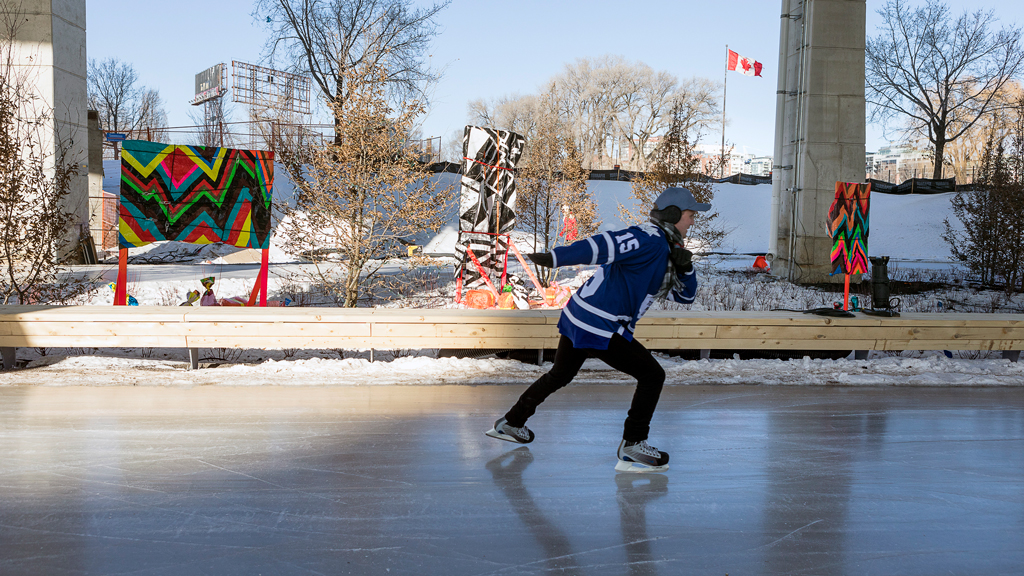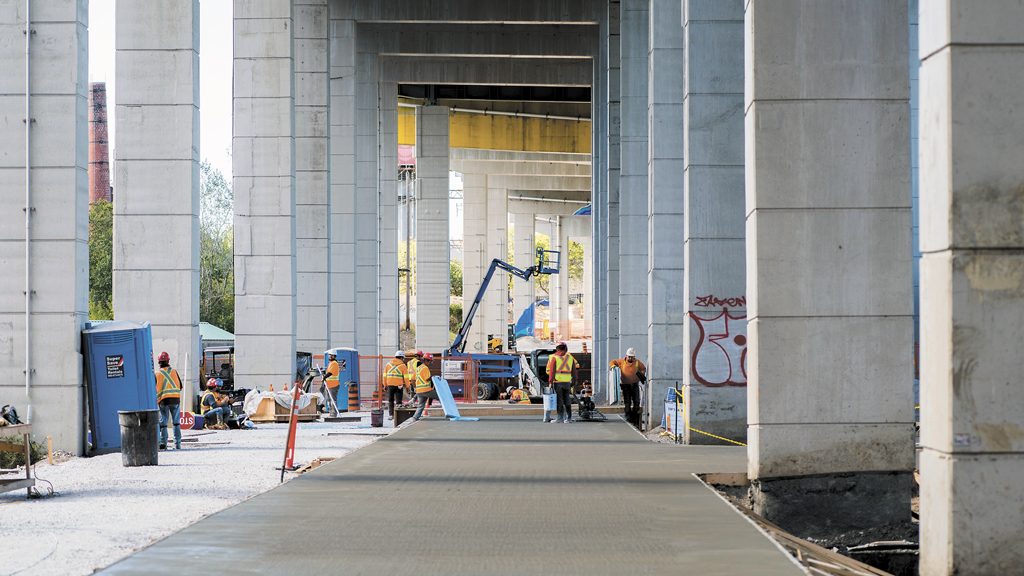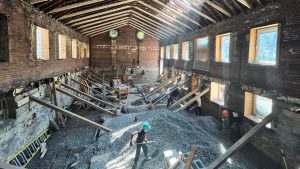The once swampy, overgrown and unused space under the Gardiner Expressway in Toronto is being transformed into the newest public space in the city.
The Bentway Skate Trail, at 220 metres long, is located under the highway right beside the Fort York Visitor Centre between Strachan Avenue and Bathurst Street. It officially opened to the public on Jan. 6.
The trail is the first part of the initial phase of The Bentway, a 1.75-kilometre urban space underneath the Gardiner, which will host year-round activities and events.
The general contractor and construction manager on the project is Kiewit. Urban designer Ken Greenberg came up with the vision for the space along with the City of Toronto, Waterfront Toronto, PUBLIC WORK, the Fort York National Historic Site and Artscape. Judy and Wilmot Matthews donated $25 million for the first phase of the project.
Making the skating trail a reality did pose some challenges for its constructors.
“It was quite an aggressive project schedule and it was a project that was imagined in a space that was previously a forgotten space that nobody thought of building anything in,” said Shannon Baker, senior project manager for Waterfront Toronto, who managed the design and construction process in collaboration with the City of Toronto. “Getting the approvals and figuring out how to construct something under an expressway was a challenge but was the result of a lot of teamwork and problem solving to get through it.”
The project also aims to knit together seven local neighbourhoods with over 70,000 residents, become a gateway to the waterfront and provide access to attractions and destinations such as the Fort York National Historic Site, Ontario Place, Exhibition Place, Harbourfront Centre and the CN Tower.

“Moving from north to south under the Gardiner is not an easy thing to do, so we’re trying to create a place for people to do that in a space that didn’t facilitate that at all,” explained Sara Peel, director of operations and facilities at The Bentway Conservancy which operates and maintains the area.
In addition to the skate trail, phase one also includes the space just east of the skating trail which has an ice skating house with washroom facilities, skate rentals, office space and the Zamboni house. Another component of the first phase is Strachan Gate, a tiered amphitheatre with a grass picnic and viewing area.
“There is still construction ongoing on one of our sites next to Strachan Avenue where we’re building a large amphitheatre. Using some of the land that was dug up during the construction process under the Gardiner, we’re building a giant hill that will be sodded and turned into a seating and picnic area and watching space for the events that we plan to do under the Gardiner,” said Peel. “We’re looking to launch the entire phase one reveal in summer this year, so largely construction will be completed by spring.”
Construction on the skate trail started late summer and took about five months to complete, explained Baker. An extension to the Fort York Visitors Centre was constructed to house all of the mechanical equipment that is required for the refrigeration of the trail. In terms of cooling, the skating trail operates on a unique hybrid system — it’s CO2-based with glycol circulation in the refrigeration pipes.
“Skating trails themselves are not something that is done all the time so the configuration of the refrigeration infrastructure within the skating trail layout was something that was a complicated challenge for the contractors,” said Baker. “We also had to be mindful of the Gardiner itself. It’s a very important piece of city infrastructure and we had to make sure that construction operations didn’t impact it. The contractor did monitor the structure so that they were aware of even slight movements.”
Peel said the skate trail was expected to open by the end of 2017 but there were some operational delays.
“It took some time to figure out how we were going to layer on the operational part, how to make it functional — how do we make ice, what kind of staff are required to operate an ice skating trail,” Peel noted.
Crews worked around the clock in the last few weeks before the opening to get the trail up and running, she said.
“One of the challenges is that the weather has been unbelievably cold,” said Peel, adding workers required regular breaks inside when the temperature dropped. “We hadn’t ever run cables up the bents (inverted w-shaped concrete pillars that hold up the expressway) and across the underside of the deck of the Gardiner so there was lots of having to figure out as we went. We had crews up in 155-foot booms and 80-foot and 60-foot booms and it’s very windy and very cold.”











Recent Comments
comments for this post are closed